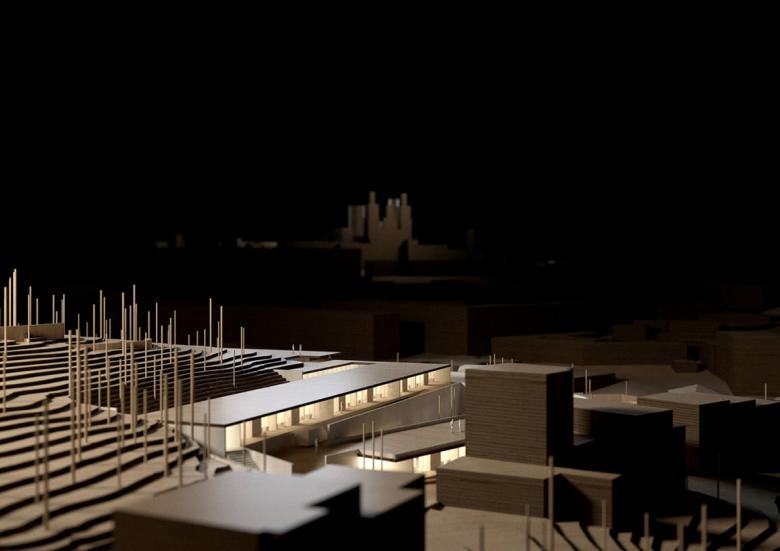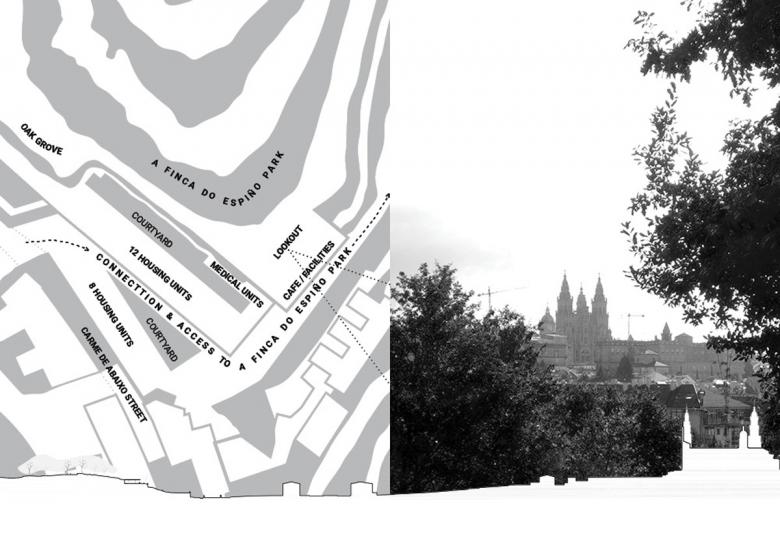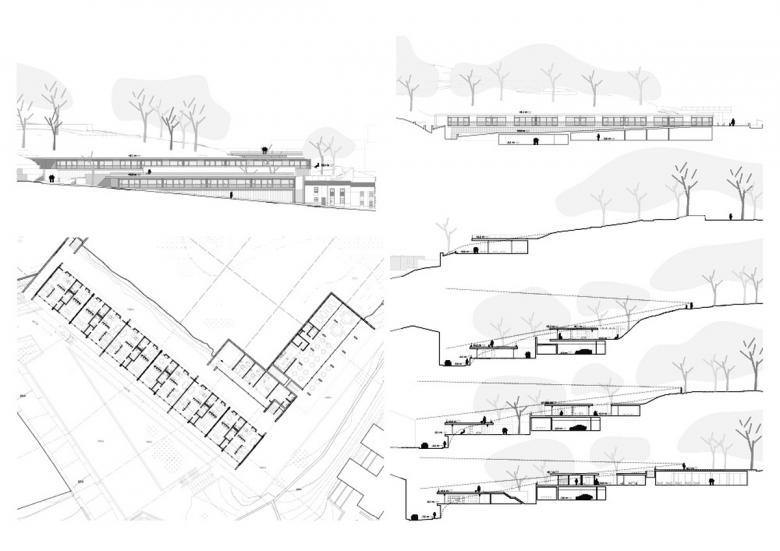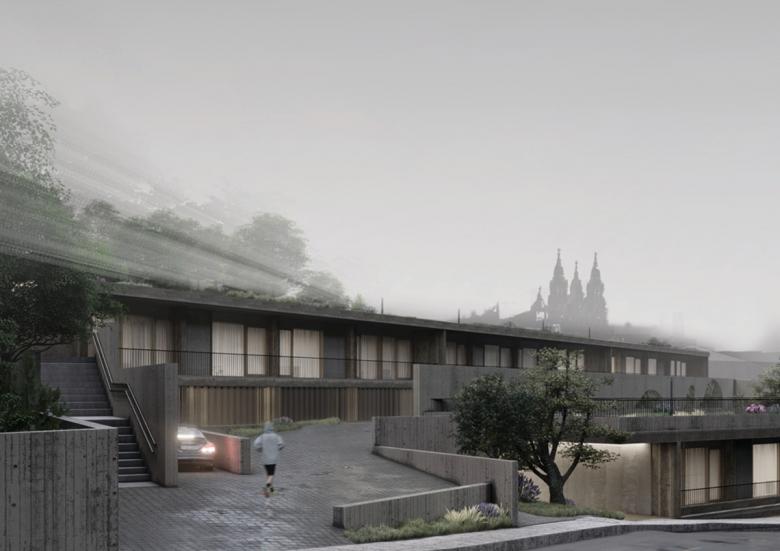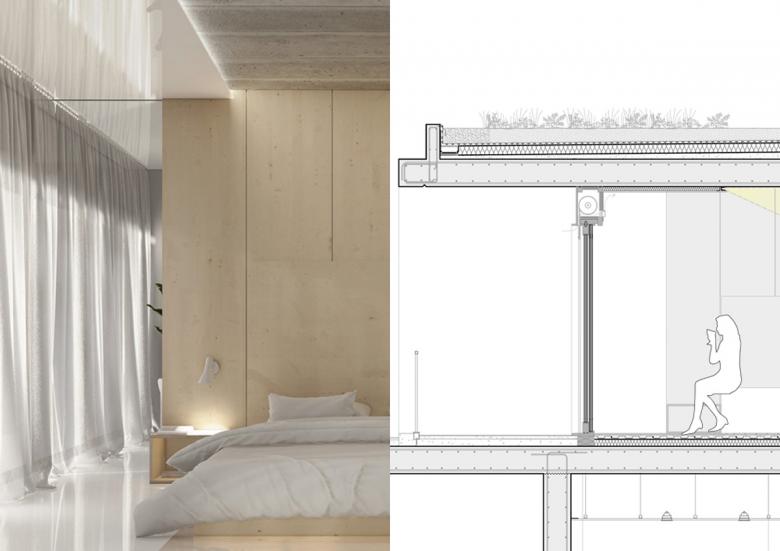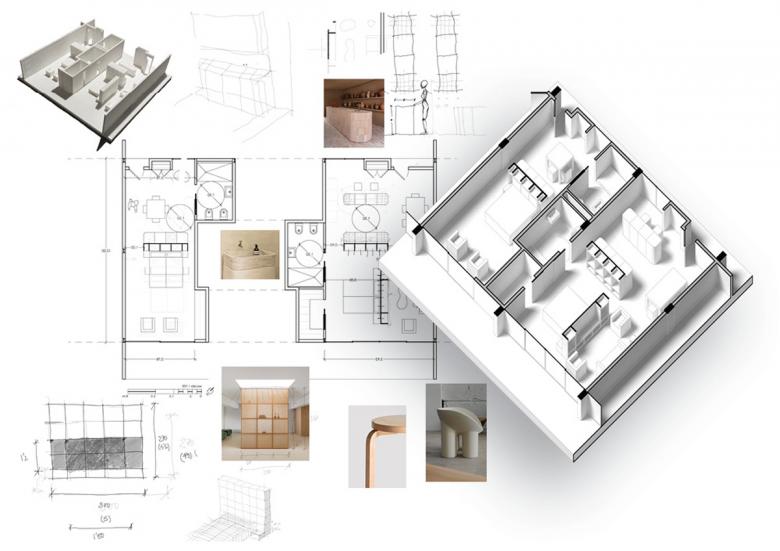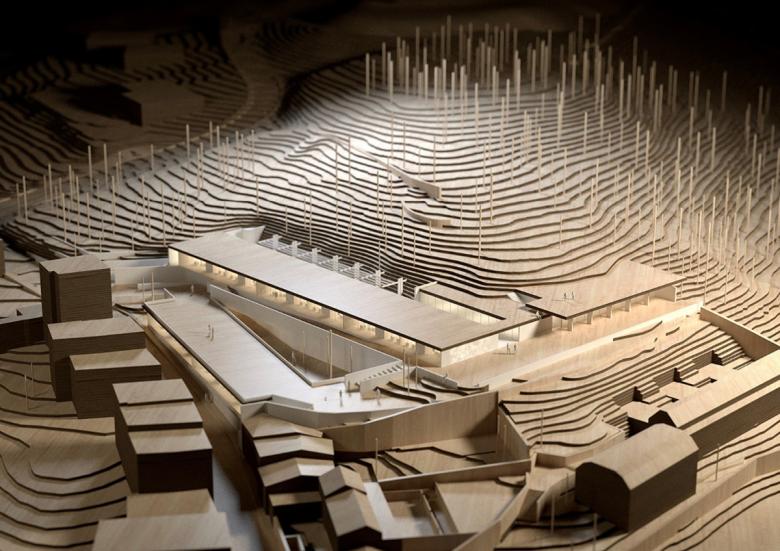
Senior Co-Housing in Santiago De Compostela
Back to Projects listProject Location
Santiago de Compostela, Spain
Topic
Users Nature interaction, Social interaction
Program
Collective housing Elderly, Social
An innovative residential complex overlooking the cathedral
This innovative senior cohousing project is designed to promote independence and wellbeing. Featuring medical units, a cafeteria, and common areas, the complex encourages social interaction and community building.This model seeks to move beyond traditional, institutionalized nursing homes to prioritize individuality, freedom, and welfare.
This project aims to create a modern nursing home that promotes the independence and well-being of its senior residents. By separating the concept from the hospital-like environment that has become all too common, the design will focus on creating a more comfortable and home-like atmosphere. The pandemic has highlighted the need for a more modern approach to elder care, and this project aims to provide just that.
The senior cohousing project is an innovative residential complex designed to meet the needs of the elderly. Located in the Finca do Espiño park, the complex is built on a hill that overlooks the Santiago de Compostela cathedral. The complex features medical units, a cafeteria, and common areas that promote social interaction and community building. The project offers a solution to the housing and care needs of the elderly focusing on supporting their independence and enriching their quality of life. A series of terraced volumes that emerge from the topography are projected, digging into its geometry. 3 levels connected by an access road to the park that crosses the urban proposal, so that it is accessible throughout its route. One of the volumes is the cafeteria/common area that has a overlook on the roof that is part of the park. The lower volume is parallel to Carme de Abaixo street. In this part, there are 8 housing units, which are accessed through a large backyard full of vegetation. These housing units are mainly oriented for users who have greater independence, and therefore can take advantage of the more direct connection with the urban tissue. In the northern part, we find the second residential volume, with 12 residential units focused on those people with a higher level of dependence, closer to the common areas and to the medical units. These residential units are also accessed from the north side, in this case through an open courtyard walkway, which overlooks a slope full of vegetation. The units are designed with the elderly in mind, featuring accessible layouts and amenities that promote independent living. There are two types of housing units, a 65 m2 model for a couple, with a complete, adapted and equipped kitchen, dining room, accessible bathroom, bedroom, living room and dressing room; and another model for single occupancy, consisting of 41 m2 divided into an adapted kitchen and bedroom, accessible bathroom and storage.
